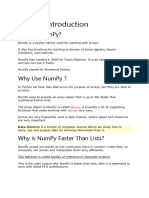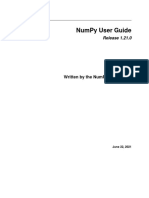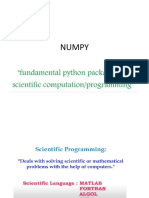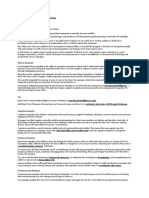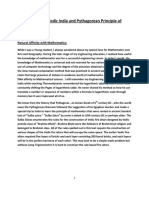0% found this document useful (0 votes)
10 views14 pagesNumpy 1
This document serves as an introduction to NumPy, a numerical computation module for Python, covering its basic functions and types. It includes guidance on importing NumPy, creating and manipulating N-dimensional arrays, and utilizing universal functions for mathematical operations. The document aims to provide essential knowledge for beginners to effectively use NumPy in mathematical and scientific applications.
Uploaded by
Expert_ModellerCopyright
© © All Rights Reserved
We take content rights seriously. If you suspect this is your content, claim it here.
Available Formats
Download as PDF, TXT or read online on Scribd
0% found this document useful (0 votes)
10 views14 pagesNumpy 1
This document serves as an introduction to NumPy, a numerical computation module for Python, covering its basic functions and types. It includes guidance on importing NumPy, creating and manipulating N-dimensional arrays, and utilizing universal functions for mathematical operations. The document aims to provide essential knowledge for beginners to effectively use NumPy in mathematical and scientific applications.
Uploaded by
Expert_ModellerCopyright
© © All Rights Reserved
We take content rights seriously. If you suspect this is your content, claim it here.
Available Formats
Download as PDF, TXT or read online on Scribd
/ 14




























